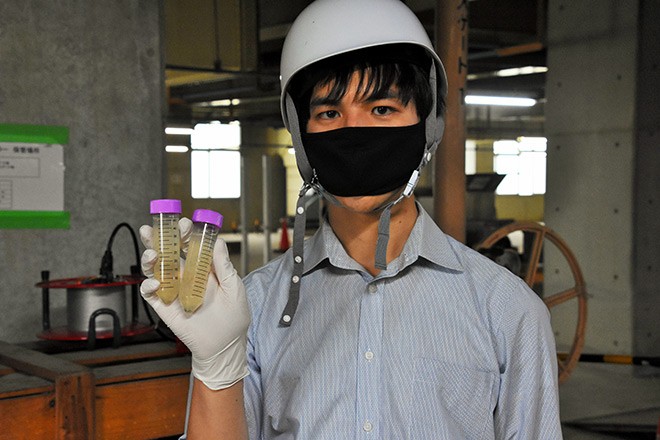New tech will let cities detect virus in sewage with higher sensitivity
Published on by Water Network Research, Official research team of The Water Network in Technology
Pharmaceutical company Shionogi & Co. has developed technology to detect the presence of the novel coronavirus in wastewater to catch early signs of the spread of infections in a community. (Footage taken by Sho Ito)
A new technology that identifies even low levels of the novel coronavirus in a community by analyzing wastewater will soon be available to municipalities willing to pay for the service, a first in Japan.
Leading drug maker Shionogi & Co., based in Osaka, and Hokkaido University launched a joint study last autumn to develop the technology, which they said can detect the virus, even when only several people are infected, in sewage discharged from tens of thousands of people.
Local governments can estimate the total number of infections in a community by using the technology, they said.
The method raises the concentration of solids, including feces, in wastewater so that it becomes easier to detect traces of the coronavirus.
Shionogi plans to make the service available next month at the earliest, which it says has a high degree of detection sensitivity to spot the virus in sewage.
The service is expected to make it easier for local authorities to gauge the spread of infections as it will help detect the virus in asymptomatic people who have not been tested.
Coronavirus monitoring in wastewater has also been conducted overseas, including in some EU countries and Australia.
It is becoming an effective surveillance tool to detect the virus quickly as infected people with no telltale signs of infection leave traces of the virus in their feces.
“The strength of wastewater surveillance is it efficiently detects the presence of the virus without placing a burden on individuals,” said Masaaki Kitajima, an associate professor of water quality control engineering at Hokkaido University, who was involved in the technology's development. “If we can catch early signs of the spread of infections, we can respond quickly to prevent the prevalence of the virus.”
Numerous local governments have researched how to detect the virus in sewage water.
But existing wastewater monitoring tools were ineffective at detection as virus levels in wastewater have been low, reflecting the relatively limited spread of infections in Japan's population.
Shionogi’s service is primarily aimed for local governments and other entities managing sewage treatment facilities.
The cost for the service has yet to be decided. The company said it has received inquiries about it.
Municipalities have been gauging the spread of infections in their communities by conducting PCR tests on people who exhibit symptoms of the coronavirus.
But as people without symptoms are not liable to suspect they have caught the virus, few of them get tested, assisting the spread of the virus to others.
Monitoring of wastewater at treatment facilities, however, enables local governments to catch early signs of outbreaks.
If the coronavirus is detected in a community's sewage water using the new technology, local governments can then conduct PCR tests on residents to identify who has been infected.
In April, Shionogi began doing demonstration experiments using the surveillance tool at 10 sewage treatment facilities in Osaka Prefecture.
Under the experiments, wastewater is collected every hour by an automatic water sampler, which then puts the water collected for the past 24 hours into a 50-milliliter container to be sent to a lab and tested for the coronavirus.
The test results are back in a couple of days, Shionogi said.
The company is also working on the development of a service that predicts infection trajectory a week or two ahead based on data gathered from the continuous monitoring of sewage.
“This technology can be applied to deal with other infectious diseases,” said Takuko Sawada, Shionogi's vice president. “We are hoping to make policy proposals for health care systems to grapple with the virus.”
In the Netherlands, where the number of coronavirus infections per capita is 16 times that in Japan, wastewater has been monitored at all of the nation’s treatment facilities.
Each municipality releases weekly data on coronavirus levels per 100,000 people.
In Australia, authorities are calling for residents to undergo a PCR test in a community where the virus was detected in sewage.
Monitoring of sewage for the coronavirus has also been undertaken by private sector companies in the United States and France.
(This article was written by Sho Ito and Kanako Tanaka.)
Attached link
http://www.youtube.com/embed/H2DcrKT-QBwTaxonomy
- Covid-19
 Wastewater samples collected over 24 hours to detect the novel coronavirus at a sewage treatment facility in Ibaraki, Osaka Prefecture, on April 16. (Kanako Tanaka)
Wastewater samples collected over 24 hours to detect the novel coronavirus at a sewage treatment facility in Ibaraki, Osaka Prefecture, on April 16. (Kanako Tanaka)